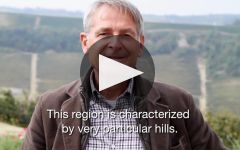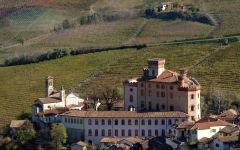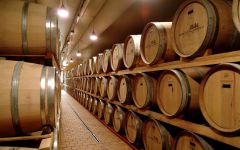Marchesi di Barolo Gavi Le Lune 2000


Product Details
Your Rating
Somm Note
Winemaker Notes
Bouquet: Delicate and fruity that hints of apples and almonds.
Taste: Dry, elegant, fresh and crisp with a velvety finish.
Grape Varieties: 100% Cortese








The Marchesi di Barolo estate encompasses approximately 430 acres of vineyards in the Langhe, some of the finest in Piedmont, including the prestigious Cannubi cru. The cellars are in the village of Barolo, overlooking the Renaissance castle of the Marchesi Falletti di Barolo. Barolo as we know it today was first made in the early 19th century by the Marchese Carlo Tancredi Falletti di Barolo and his wife, Giulia. The wine from their estate soon became known as “the wine from Barolo”, served at important diplomatic and royal functions. The Marchesi had no children and following the death of the couple, the Marchesi di Barolo dynasty was left without an heir. Per the wishes of Marchesa Giulia, a great philanthropist, the family assets were donated to charity and a non-profit foundation was created in their name, “Opera Pia Barolo”, helping the needy of nearby Torino. The sales of wine from their Barolo vineyards continue to fund the charity, which still exists today. In 1929, local winemaker, Pietro Abbona purchased the cellars formerly owned by the Marchesi and eventually acquired all their vineyard holdings as well. Today, Marchesi di Barolo remains a family business. Since 2006, the estate has been under the direction of Pietro’s great-grandson and fifth-generation winemaker, Ernesto Abbona and his wife Anna, (with their children Valentina and Davide) who have inherited a longstanding winemaking tradition and a love of the vineyards and its wines..

First recorded in the early 17th century in the province of Alessandria in SE Piedmont, Cortese today is most highly regarded from Gavi where soils are limestone-rich. It also grows well in the surrounding zones, namely Monferrato and Colli Tortonesi. Somm Secret—Because of its freshness and chalky minerality, this white wine commonly populates the fish restaurants’ wine lists of the Ligurian coast so practically owes more allegiance to this neighboring region than its home.

Set upon a backdrop of the visually stunning Alps, the enchanting and rolling hills of Piedmont are the source of some of the country’s longest-lived and most sought-after red wines. Vineyards cover a great majority of the land area—especially in Barolo—with the most prized sites at the top hilltops or on south-facing slopes where sunlight exposure is maximized. Piedmont has a continental climate with hot, humid summers leading to cold winters and precipitation year-round. The reliable autumnal fog provides a cooling effect, especially beneficial for Nebbiolo, Piedmont’s most prestigious variety.
In fact, Nebbiolo is named exactly for the arrival of this pre-harvest fog (called “nebbia” in Italian), which prolongs cluster hang time and allows full phenolic balance and ripeness. Harvest of Nebbiolo is last among Piedmont's wine varieties, occurring sometime in October. This grape is responsible for the exalted Piedmont wines of Barbaresco and Barolo, known for their ageability, firm tannins and hallmark aromas of tar and roses. Nebbiolo wines, despite their pale hue, pack a pleasing punch of flavor and structure; the best examples can require about a decade’s wait before they become approachable. Barbaresco tends to be more elegant in style while Barolo is more powerful. Across the Tanaro River, the Roero region, and farther north, the regions of Gattinara and Ghemme, also produce excellent quality Nebbiolo.
Easy-going Barbera is the most planted grape in Piedmont, beloved for its trademark high acidity, low tannin and juicy red fruit. Dolcetto, Piedmont’s other important red grape, is usually ready within a couple of years of release.
White wines, while less ubiquitous here, should not be missed. Key Piedmont wine varieties include Arneis, Cortese, Timorasso, Erbaluce and the sweet, charming Muscat, responsible for the brilliantly recognizable, Moscato d'Asti.
